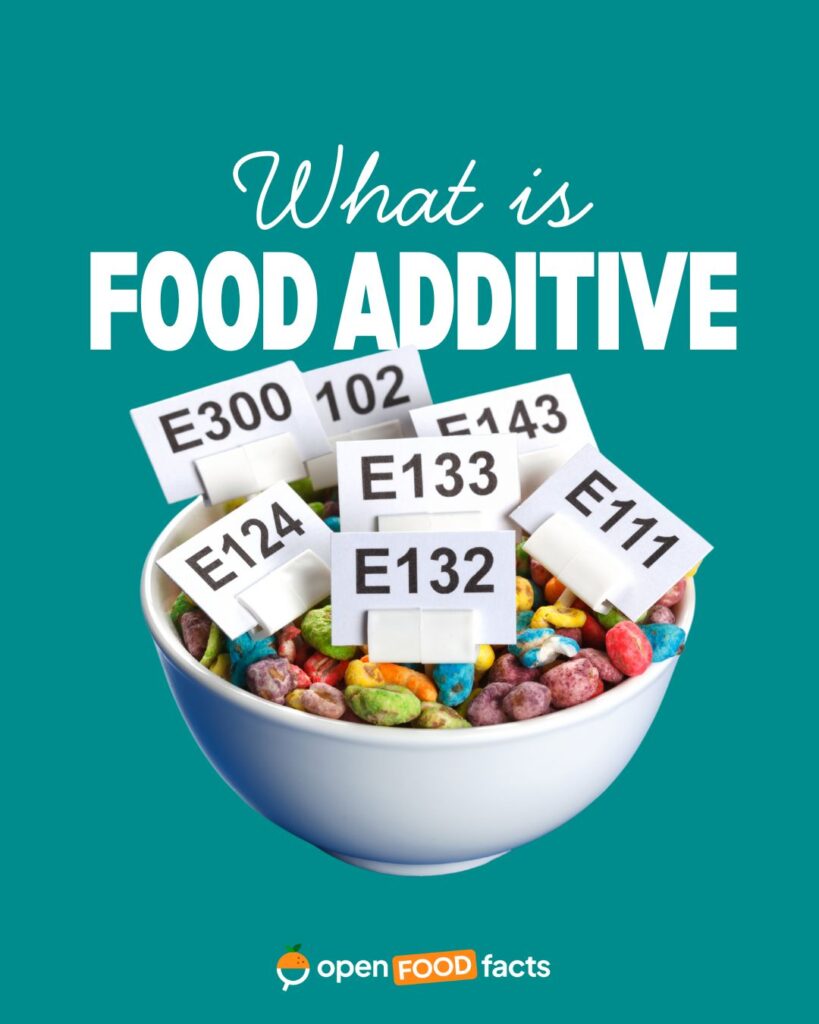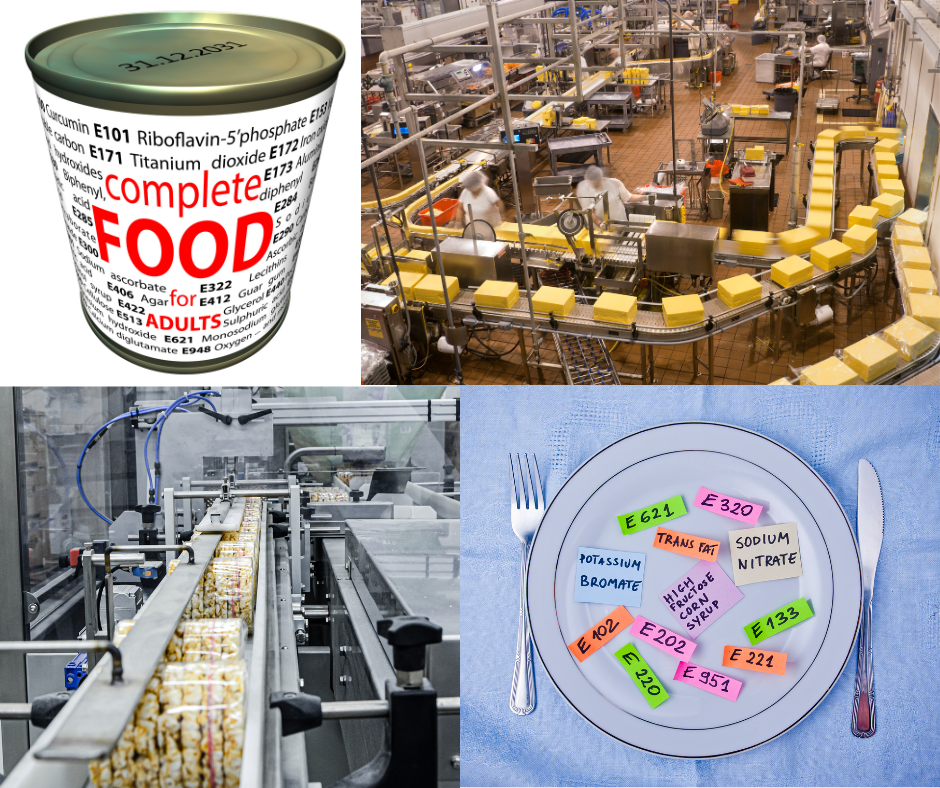
Understanding food additives: What they are and what to look out for
Have you ever looked at a food label and seen a long list of unfamiliar ingredients? Many of those are food additives. From soft drinks to salad dressings, food additives are nearly everywhere in our modern diets.
Let’s break it down together.
What are food additives?

Food additives are substances added to food products for technical purposes. These include:
- Preserving freshness
- Improving flavor or appearance
- Enhancing texture
- Extending shelf life
They’re especially common in processed and industrially manufactured foods, and are not typically consumed on their own, found in one’s pantry or used like traditional ingredients.
Many substances used as additives occur naturally, such as vitamin C and pectin in fruit, lycopene in tomatoes, etc. Food additives can also be derived from animals, or minerals, or they can be chemically synthesised.
Types of food additives
There are many categories of food additives, each serving a different function:
- Flavouring agents: Chemicals that impart flavours or fragrances to modify aroma or taste
- Enzyme preparations: Naturally occurring proteins that boost biochemical reactions, used in various food production processes
- Preservatives: To slow down decomposition caused by mould, air, bacteria, or yeast
- Colours: Added to replace lost colours or to make food more attractive
- Sweeteners (including non-sugar sweeteners): Used as an alternative to sugar
- Antioxidants: To prevent deterioration caused by oxidation
- Emulsifiers, stabilisers, thickeners, gelling agents, etc.
(📚 Source: WHO, EFSA)
Are additives safe?
Additives must pass strict safety evaluations before being authorised. These reviews are carried out by expert bodies like EFSA (European Food Safety Authority) and are based on extensive scientific data.
In Europe, approved additives receive an E number, meaning they have passed safety tests. Labels must list the additive’s function and name or E number.
⚠️ But safety does not mean zero risk. It means no appreciable risk when consumed within permitted levels.
Even though additives are tested before approval, some risks still exist:
‼️ The establishment of an Acceptable Daily Intake (ADI) implies that there is a level of consumption above which adverse health effects could potentially occur. EFSA may even lower the ADI of an additive due to limited toxicological data.
‼️ Ongoing re-evaluation of permitted food additives by EFSA highlights that iInitial safety assessments are not always definitive, and continuous scrutiny based on the latest scientific knowledge is necessary.
‼️ The WHO has issued a recommendation against the general use of non-sugar sweeteners for long-term weight loss or maintenance, citing evidence that they don’t seem to provide benefit and may increase the risk of noncommunicable diseases.
‼️ Individuals with allergies or sensitivities to certain food additives may experience adverse reactions. Therefore, checking food labels carefully is crucial for these individuals.
Moreover, one area of growing research is the combined effect of multiple additives consumed together, called the cocktail effect. 🍸
A 2024 French study (Inserm, Inrae, Université Sorbonne Paris Nord) found that certain combinations of food additives are associated with a higher risk of type 2 diabetes, even if the individual additives were deemed safe when consumed separately. This highlights the complexity of real-world food consumption and the need for more transparency and continuous research.
🔎 Read more:

Some harmful additives :
1. Nitrites and nitrates

When nitrites and amino acids are present, carcinogenic compounds called nitrosamines can form during cooking with high heat. Manufacturers have to limit the amount of nitrites they use in processed meats by law, because of the dangers that nitrosamines pose.
You should check the labels for:
- sodium nitrate (E251)
- sodium nitrite (E250)
- potassium nitrate (E252)
- potassium nitrite (E249)
Source : healthline
2. Aspartame

Aspartame is an artificial (chemical) sweetener widely used in various food and beverage products since the 1980s, including diet drinks, chewing gum, gelatin, ice cream, dairy products such as yogurt, breakfast cereal, toothpaste and medications such as cough drops and chewable vitamins. The International Agency for Research on Cancer (IARC) classified aspartame as “possibly carcinogenic to humans” based on limited evidence for cancer in humans, specifically for hepatocellular carcinoma, a type of liver cancer.
Source : WHO
3. Monosodium Glutamate

Monosodium glutamate (MSG) is among the most commonly used additives in commercial food products. Its use has grown over time and it can now be found in a wide range of ingredients and processed foods available in supermarkets and grocery stores. MSG adds a distinctive flavor to these foods, known as “umami” in Japanese. However, extensive use of MSG has been associated with various forms of toxicity, including obesity, metabolic disorders, neurotoxic effects, and detrimental effects on reproductive organs.
Source : PMC
4. Sodium Benzoate

Sodium benzoate is a preservative commonly used in fruit juices, fermented foods, sauces, and certain pancake syrups. It has been associated with several health concerns, including DNA damage, hormonal imbalances, and decreased fertility.
Source : EWG, nutritionfacts
5. Artificial food colorings

Consumption of synthetic food dyes has been linked to hyperactivity, inattentiveness, and restlessness in some children. Moreover, certain artificial dyes, such as Red 3, have been found to cause cancer in animals. Additionally, some dyes have been found to be contaminated with carcinogens like benzidine.
How can Open Food Facts help you spot additives ? 🔎🥫
When you use the Open Food Facts website or mobile app, some products will be displayed as processed or ultra-processed (or NOVA 3 or 4). The number of additives will be shown and you can find out more about them by clicking on that data.
You may choose to consume less products that include additives by going for a less processed diet.
In conclusion, food additives play a significant role in modern food production, but being informed is essential. At Open Food Facts, we’re committed to transparency and helping everyone understand what’s really in your food.
Dr Chris Van Tulleken’s lecture on ultra-processed food :
